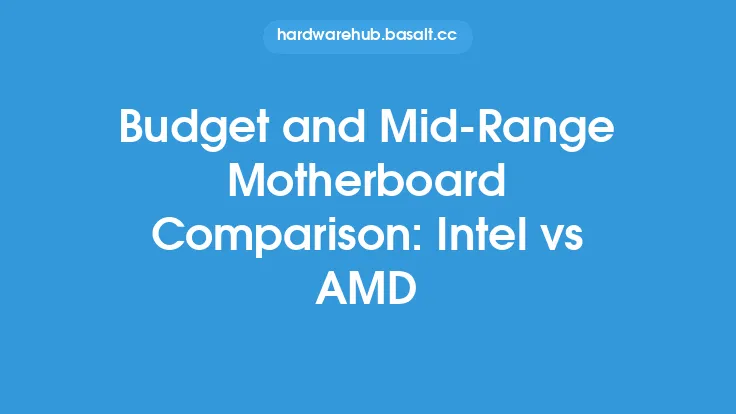When it comes to computer hardware, one of the most critical components is the Random Access Memory (RAM). It plays a vital role in determining the overall performance of a system, and its speed can significantly impact the user experience. In recent years, RAM overclocking has become a popular trend among enthusiasts and gamers, who seek to squeeze out every last bit of performance from their systems. But what exactly is the difference between RAM overclocking and stock speeds, and how do they impact system performance?
Introduction to RAM Speeds
RAM speed, measured in MHz, refers to the rate at which data is transferred between the RAM and the system's processor. Stock speeds are the default speeds at which RAM operates, as specified by the manufacturer. These speeds are typically conservative, ensuring that the RAM is compatible with a wide range of systems and operates within a safe temperature range. Overclocking, on the other hand, involves pushing the RAM beyond its stock speeds, often to achieve higher performance in demanding applications such as gaming, video editing, and 3D modeling.
Performance Comparison
To understand the performance difference between RAM overclocking and stock speeds, it's essential to consider the various factors that impact system performance. These include the type of RAM, its capacity, and the system's overall configuration. In general, overclocking RAM can result in significant performance gains, particularly in applications that rely heavily on memory bandwidth. For example, in gaming, overclocked RAM can improve frame rates, reduce lag, and enhance overall responsiveness. In contrast, stock speeds may not provide the same level of performance, potentially leading to bottlenecks and reduced system responsiveness.
Technical Aspects of RAM Overclocking
From a technical perspective, RAM overclocking involves adjusting the RAM's timing parameters, such as the CAS latency, RAS-to-CAS delay, and command time. These parameters determine how quickly the RAM can access and transfer data. By tweaking these settings, overclockers can achieve higher speeds, but this also increases the risk of system instability and data corruption. Additionally, overclocking RAM requires a deep understanding of the underlying hardware and software, including the motherboard, processor, and memory controller.
Real-World Performance Differences
In real-world scenarios, the performance difference between RAM overclocking and stock speeds can be significant. For example, in a system with 16 GB of DDR4 RAM running at stock speeds of 2133 MHz, overclocking the RAM to 3200 MHz can result in a 20-30% increase in memory bandwidth. This can translate to improved performance in applications such as video editing, where faster memory access can reduce rendering times and improve overall productivity. Similarly, in gaming, overclocked RAM can provide a smoother and more responsive experience, particularly in games that rely heavily on memory bandwidth.
Limitations and Considerations
While RAM overclocking can offer significant performance gains, there are also limitations and considerations to keep in mind. One of the primary concerns is system stability, as overclocking can push the RAM beyond its safe operating range. This can lead to data corruption, system crashes, and even damage to the RAM or other system components. Additionally, overclocking RAM can also increase power consumption, which can impact system temperatures and reduce the overall lifespan of the components.
Conclusion
In conclusion, the performance difference between RAM overclocking and stock speeds can be significant, particularly in applications that rely heavily on memory bandwidth. While overclocking can offer improved performance and responsiveness, it's essential to consider the technical aspects and potential limitations. By understanding the underlying hardware and software, and taking a careful and informed approach to overclocking, enthusiasts and gamers can unlock the full potential of their systems and achieve exceptional performance. However, it's also important to remember that stock speeds are often a safe and reliable option, and overclocking should only be attempted by those with a deep understanding of the underlying technology and a willingness to accept the associated risks.





